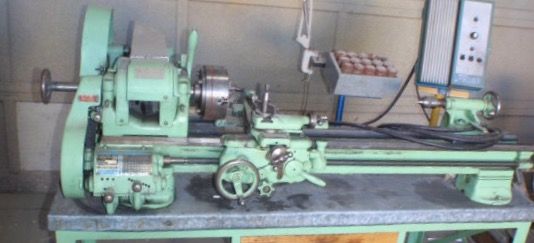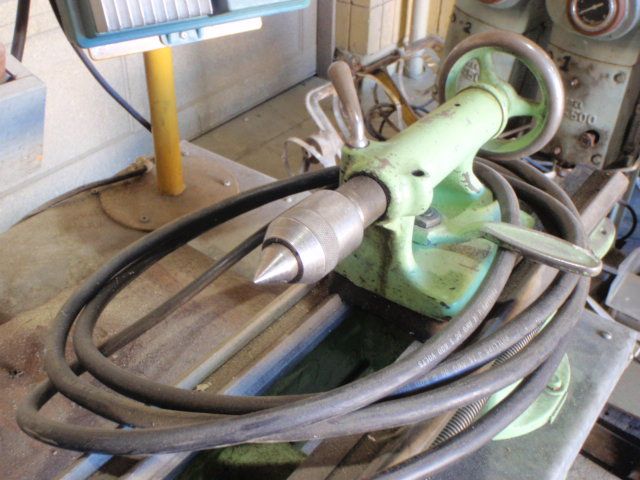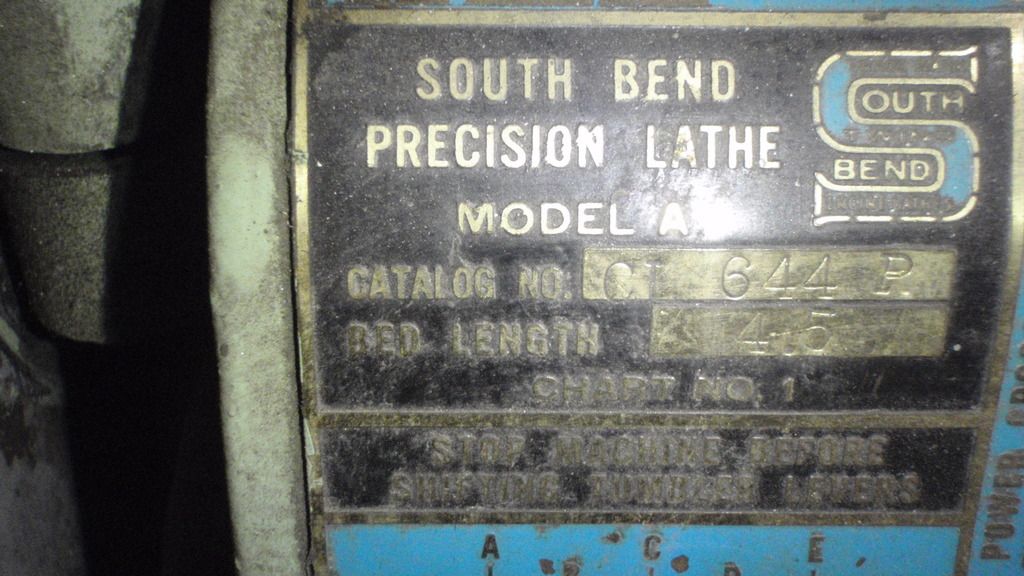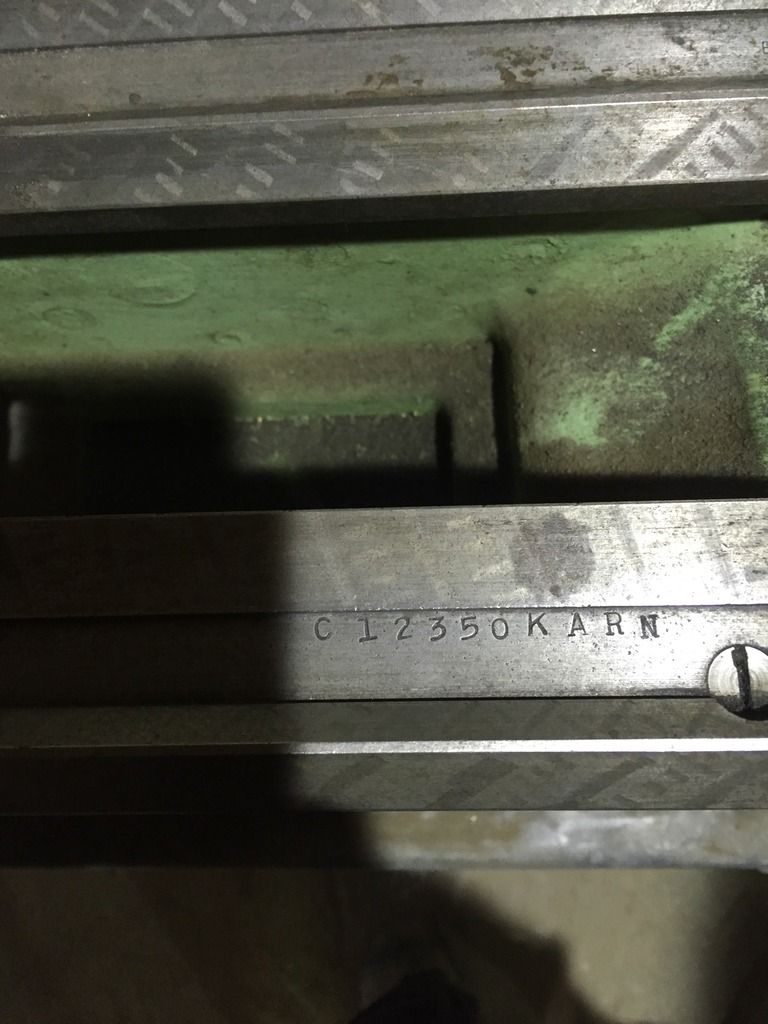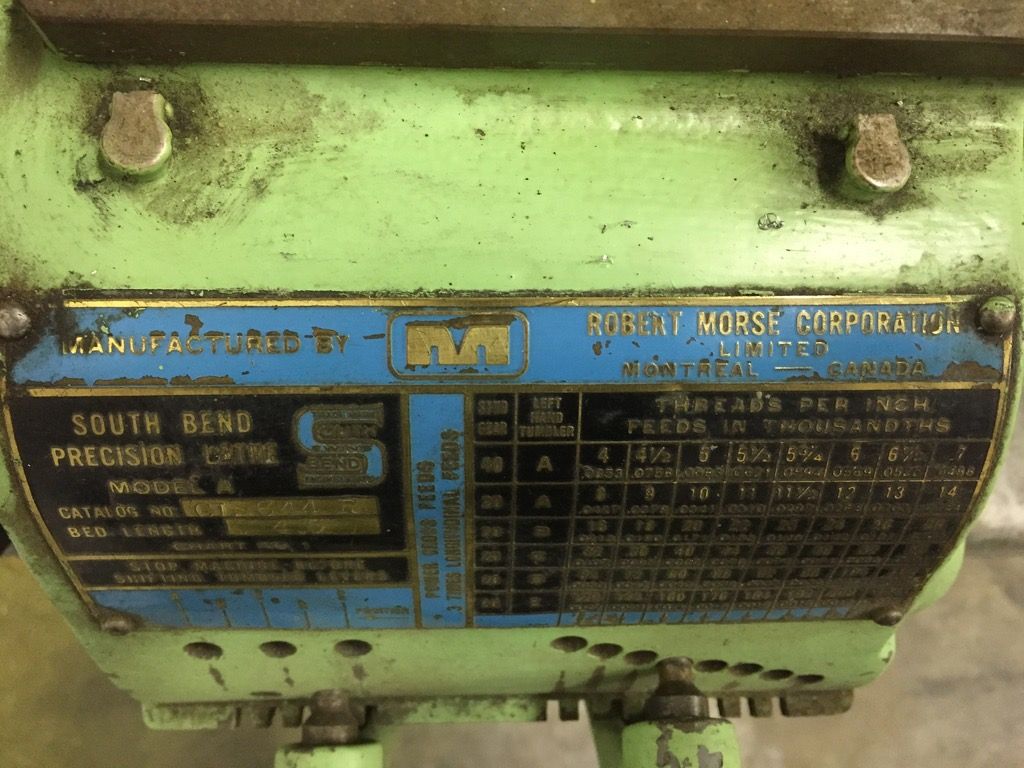Although I do not know anything about that company, It was common practice for the distributor to put their logo somewhere on the machine. Although I have not seen a logo on a gearbox plate. Having said that I doubt it has anything to do with the serial number discrepancy. South Bend had a standard serial number arrangement that they developed in later years. This numbering system identified the lathe When purchasing parts. Allowing the manufacturer to know which version of the lathe they were dealing with. For instance if you broke your tailstock clamping plate, and wanted to order a new one, The serial number would tell them which one to send you. The 1947 So-called intermediate bid Lathe was not quite as wide in between the ways as the earlier models. And from what I understand the later models as well. Any deviation from this basic numbering scheme Would be confusing to say the least. However extra characters/Symbols were used, But normally not by South Bend. For instance the U.S. Navy Included an anchor symbol on their machines. In fact each branch of the military would add their own symbols to identify the machine as belonging to that branch of the military. Large companies that purchased these machines may also add their company logo/name to the machine to help identify it as belonging to that company. Part of their inventory control. The only way you can really tell is to purchase a serial number card from South Bend. Although I suspect that it will give you the same information that we already suspect. the Lathebed is from a 10K, but the rest of the Lathe is a 9N. and without knowing the original serial number, There is not much more information we can give you. As you take it apart and clean it, take pictures and post them here. Maybe we can give you some insight of what model lathe you really have. For instance the headstock bearings in the main casting changed over the years. From a solid bearing, to a segmented bearing, to a bronze bearing. We know about what time these changes were made and this will narrow down the year that it was made. But we will probably never pinpointed exactly.
I'm glad you're happy with the machine, if you need any more help, please don't hesitate to ask. Someone will try to help you. Whether this is your first Lathe or just your first South Bend Lathe, you will have a lot to learn. Fortunately these are relatively simple machines, but well-made. some of these machines are still going after 100 years. If you're careful and follow the advice given on this board, your machine should Give you a lifetime of enjoyment.
stay safe and have fun.
Joe.


